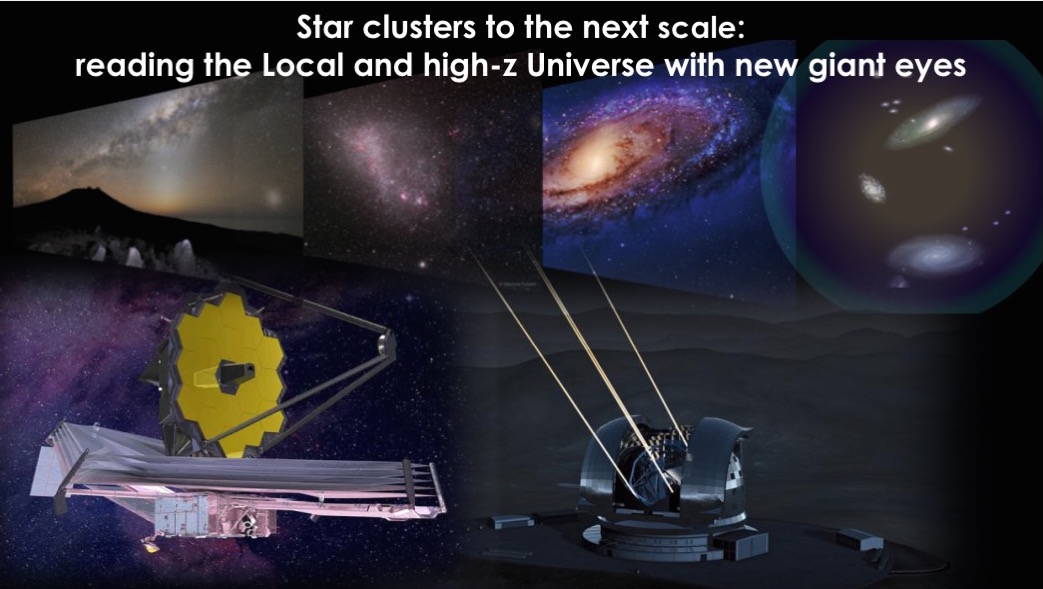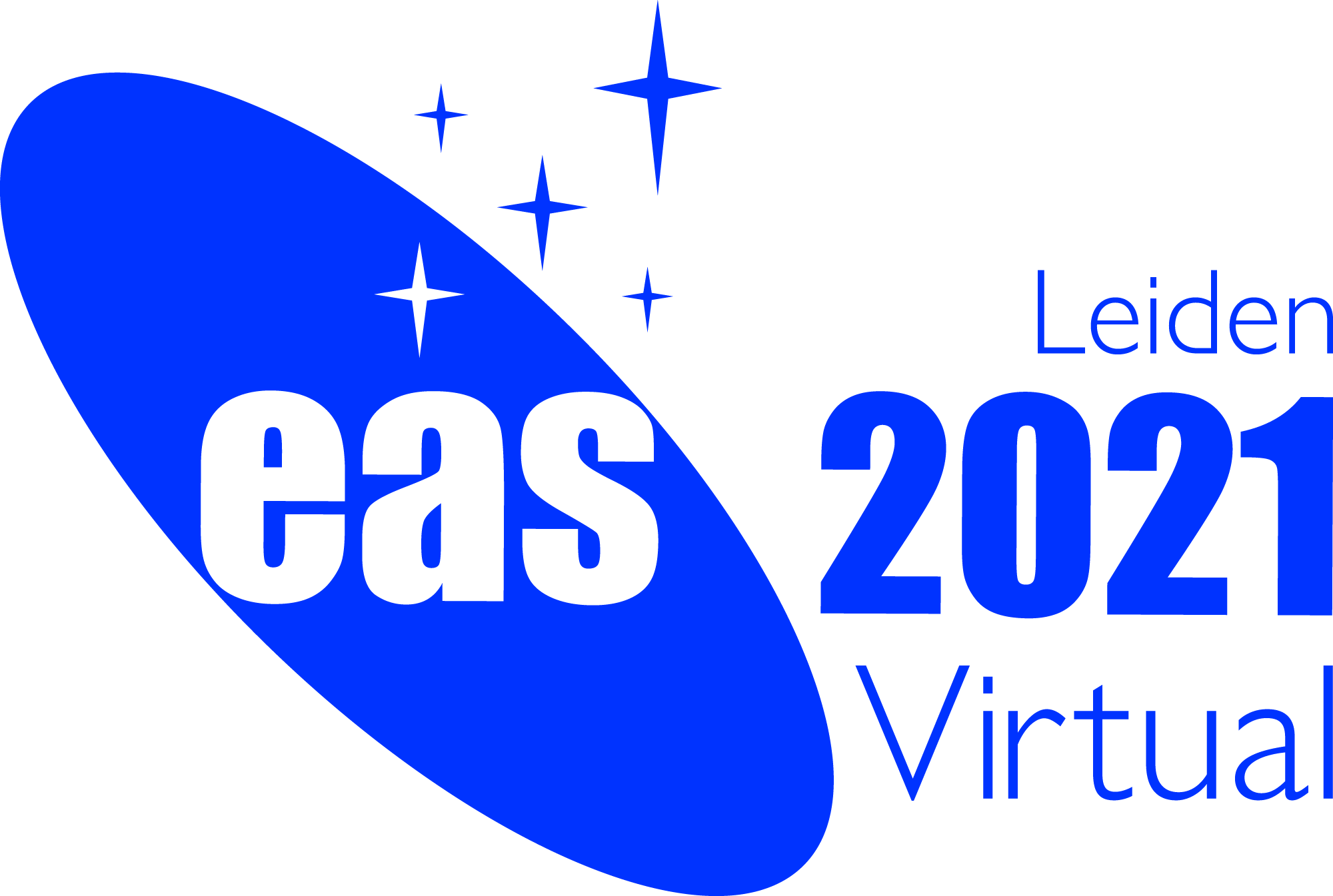Special Session SS33
29-30 June 2021
Star clusters to the next scale: reading the Local and high-z Universe with new giant eyes

Aims and scope
Star clusters are a typical product of star formation and their physical properties are intimately linked with those of their hosts. Massive star clusters, in particular, having higher chances to survive, are indeed powerful probes of galaxy formation and evolution. However, understanding the formation of star clusters and the properties of their stellar populations has remained a major challenge so far and none of the existing theories can fully satisfy the rich set of available observational constraints.
This field is currently undergoing a revolutionizing phase. Indeed, large surveys carried out with ground and space based telescopes (such as Gaia, HST, SDSS, ALMA, ESO/VLT, ESO/VISTA, WHT) along with observations that will soon be possible with several upcoming giant facilities such as JWST, WFIRST, E-ELT, GMT are enabling unprecedented astrometric, photometric and spectroscopic studies in the Local Universe, the opportunity to finally detect and study proto-clusters at high-redshift in the early Universe and the possibility to set more stringent constraints and test new generations of cosmological hydro-dynamical simulations at spatial scales suitable to resolve stellar clusters.
In this exciting and rapidly changing context, we aim at bringing together observers and theorists from both the local Universe community that is focusing on cluster formation and evolution and on the use of old star clusters as tracers of galaxy assembly, and the high-z Universe community trying to directly observe the interplay between star cluster formation and the host galaxy. The goal is to trigger discussions and share ideas about how to efficiently use technical achievements and leverage observations spanning different spatial, temporal and physical scales to perform a quantum jump in the field and build a comprehensive picture of star cluster formation and evolution in the broader context of galaxy formation and evolution.
The program aims at fostering a close interaction between different and traditionally separate communities and provide an opportunity to familiarize with the different methodologies, terminology and connect small physical scales traced by clusters with larger ones within galaxies. This will highlight the link between old massive and young star clusters in the Local Universe, their connection to galaxy formation and their potential role in the (re)ionization of the Universe.
Programme
- Tuesday June 29: LUNCH SESSION
Introduction to the meeting and invited reviews
- Wednesday June 30: REGULAR SESSIONS
Regular Block 1: Cluster formation and early evolution in the Local Universe
General question to address: can local clusters tell anything about their formation mechanisms?
- Local cluster formation over cosmic time
- Main properties of local clusters and implications on cluster formation
- Key present and future facilities/surveys
Regular Block 2: High-z observations of proto-clusters
General question to address: what is the expected progress in light of JWST, E-ELT?
- State of the art of high-z clusters observations
- Toward comprehensive studies
- Contribution of massive clusters to cosmic reionization
Regular Block 3: Clusters/cluster formation in cosmological simulations
General question: what is their predictive power and what is needed?
- Constraints from local and high-z observations for cluster formation in cosmological simulations
- Massive clusters as tracers of galaxy assembly
- Sub-grid physics and high-resolution hydro-simulations
Invited speakers
- Marina Kounkel (Western Washington University - USA)
- Hui Li (Columbia University - USA)
- Anita Zanella (INAF/OAPD - Italy)
Scientific organisers
Emanuele Dalessandro (INAF/OAS - Italy, Chair)
Angela Adamo (University of Stockholm - Sweden)
Annette Ferguson (Edinburgh University - UK)
Elena Sabbi (Space Telescope Science Institute - USA)
Alison Sills (McMaster University - Canada)
Eros Vanzella (INAF/OAS - Italy)
Enrico Vesperini (Indiana University - USA)
Contact
emanuele.dalessandro @ inaf.it
Updated on Fri Feb 12 10:22:30 CET 2021
|

 A power cut will shut down all EAS services on Tuesday, 10 January 2017 starting at 7:30 CET.
A power cut will shut down all EAS services on Tuesday, 10 January 2017 starting at 7:30 CET.


